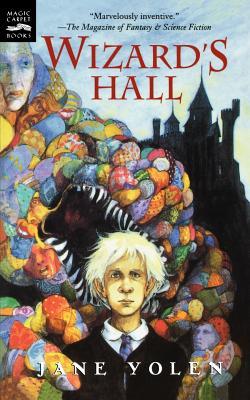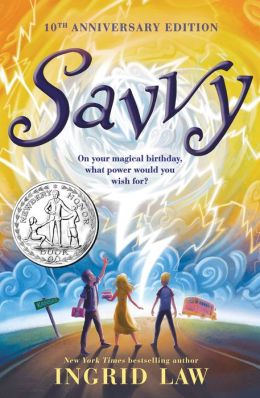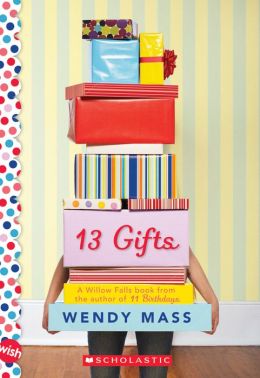 Here's a list of "Current Trends in Children's Fantasy" that I put together about 10 years ago as part of a class presentation.
Here's a list of "Current Trends in Children's Fantasy" that I put together about 10 years ago as part of a class presentation. You may ask, how was I so lucky as to be in a class that would require such a presentation. Well, the English department offered a one-time, team-taught course on Science Fiction and Fantasy. Three of us in the Master's program said, "Hey, we want in!" But it was an undergraduate level course, so the trick was to somehow make it work for our program. After a little negotiation, the powers that be decided that if we wrote especially long, rigorous papers we could count it as a graduate-level elective. Success!
You may ask, how was I so lucky as to be in a class that would require such a presentation. Well, the English department offered a one-time, team-taught course on Science Fiction and Fantasy. Three of us in the Master's program said, "Hey, we want in!" But it was an undergraduate level course, so the trick was to somehow make it work for our program. After a little negotiation, the powers that be decided that if we wrote especially long, rigorous papers we could count it as a graduate-level elective. Success!Moral of the story: with a little creativity and a little chutzpah, you can make the education system fit your needs.
But I digress.
The point is, these were the trends as I saw them in 2004. Could they still be called "current"? What on the list now looks dated (other than the titles I pull as examples), or what would you add?
Trend 1: New Stories from Old
"Transforming the tales and redirecting their messages, especially about class and gender, without losing their integrity and power. Characters, events, images, storytelling voice, and peasant audience are still in place, but our perceptions of their relationships have changed." Brian Attebery
- Apply fairy tale forms or patterns
- Holes (Louis Sachar): realistic with fairy tale conventions--ie. curse, refrain (Stanley's repeatedly "no-good, dirty-rotten, pig-stealing great, great grandfather"), "eucatastrophe" ending (a sudden, unexpected, dramatic change for the good).
- Combine story forms or genres
- Artemis Fowl (Eoin Colfer): heist & police action film with fairie folk
- Wizard Hall (Jane Yolen) and Harry Potter (J.K. Rowling): school story with magic
- Draw on multi-national, non-European source texts
- Iron Ring (Lloyd Alexander): from India
- Dragon of the Lost Sea (Lawrence Yep): from China
- Tell with unexpected narrators
- I Was a Rat (Philip Pullman): Adventures of Cinderella's rat now turned to a boy
- Spindle's End (Robin McKinnley): Fairies who raise and rescue Brier Rose
- Set in a new time or place
- Beast (Donna Jo Napoli): Beauty and the Beast, in which the beast is a Persian prince
- Explore new implications
- Ella Enchanted (Gail Carson Levine): a spunky Cinderella is cursed with obedience

- Adult-audience authors writing for children (with varying success)
- Summerland, by Michael Chabon, winner of the Pulitzer Prize and PEN/Faulkner awards
- City of the Beasts, by Isabel Allende
- Children's books marketed to adults
- Narnian Chronicles (C.S. Lewis) and His Dark Materials (Philip Pullman): new editions shelved in grown-up Fantasy section
- Exploring meta-narrative themes
- Series of Unfortunate Events (Lemony Snicket): language use and abuse
- Arcadians (Lloyd Alexander): story process

Trend 3: Reflecting Realities or Attitudes of Modern Life
- Realistic details or setting
- So You Want to be a Wizard (Diane Duane): modern, urban setting
- Devil's Arithmetic (Jane Yolen): grim holocaust
- Weetzy Bat (Francesca Lia Block): alternative lifestyles, set in modern L.A.
- Feminist themes, strong female characters
- Squire (Tamora Pierce): becoming a female knight
- Sabriel (Abhorsen #1) (Garth Nix): woman guards magic, deals with Death
- Protagonists friendly to the dark side
- In the Forests of the Night (Amelia Atwater-Rhodes): teen vampires


















